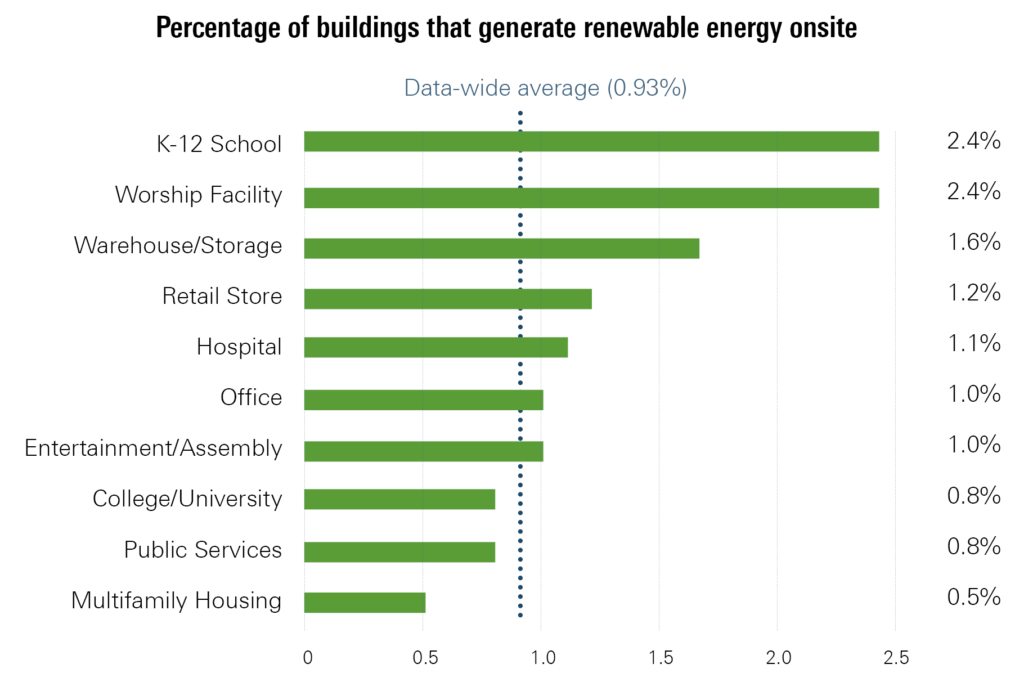
The U.S. Environmental Protection Agency (EPA) has released Commercial Buildings and Onsite Renewable Energy, a 15-page report summarizing data on the self-reported use of onsite renewable energy among a subset of U.S. commercial buildings. The information, including comparisons by building type, location and energy generated comes from the EPA’s ENERGY STAR® program, whose ENERGY STAR Portfolio Manager™ tool is used by more than 300,000 commercial buildings to measure and track energy performance.
Little public data is available on this topic. This report is the first of its kind, examining trends and practices among more than 2,400 U.S. buildings with onsite renewable energy systems.
Key fin dings
dings
The number of buildings reporting onsite renewable energy in Portfolio Manager has increased nearly ten-fold in the past decade, now making up nearly 1% of all buildings benchmarking in EPA’s tool. They are spread around the country and found on a range of building types. Worship facilities have the highest concentration of onsite renewable energy, at 2.4% of such properties.
Worship facilities with onsite renewable energy systems have higher 1 – 100 ENERGY STAR scores, on average, than their peers (57 vs 46, respectively).
The majority of buildings meet 25% or less of their electricity needs from their onsite systems, although there is a wide range. For example, warehouses get 50% while hospitals get 7%, on average. Worship facilities, on average, meet 29% of their needs from onsite renewable energy systems.
 Among worship facilities, it is more common to keep the renewable energy certificates (RECs) associated with onsite renewable energy systems than it is to sell them. This indicates that there is interest among worship facilities to claim the environmental benefits of these systems.
Among worship facilities, it is more common to keep the renewable energy certificates (RECs) associated with onsite renewable energy systems than it is to sell them. This indicates that there is interest among worship facilities to claim the environmental benefits of these systems.
Finally, in the absence of smart meters capable of separately measuring energy used on-site and energy exported back to the grid, it is challenging, if not impossible, for buildings to accurately measure and rate their energy performance.
More Information
ENERGY STAR is the government-backed symbol for energy efficiency, providing simple, credible, and unbiased information that consumers and businesses rely on to make well-informed decisions. Thousands of industrial, commercial, utility, state, and local organizations—including more than 40 percent of the Fortune 500®—rely on their partnership with the U.S. Environmental Protection Agency (EPA) to deliver cost-saving energy efficiency solutions. Since 1992, ENERGY STAR and its partners helped save American families and businesses nearly 4 trillion kilowatt-hours of electricity and achieve over 3 billion metric tons of greenhouse gas reductions—all through voluntary action. In 2017 alone, ENERGY STAR and its partners helped Americans avoid $30 billion in energy costs. More background on ENERGY STAR can be found at www.energystar.gov/about. Background on EPA’s Green Power Partnership, a voluntary program that helps organizations leverage green power, can be found at www.epa.gov/greenpower.
For more information:


